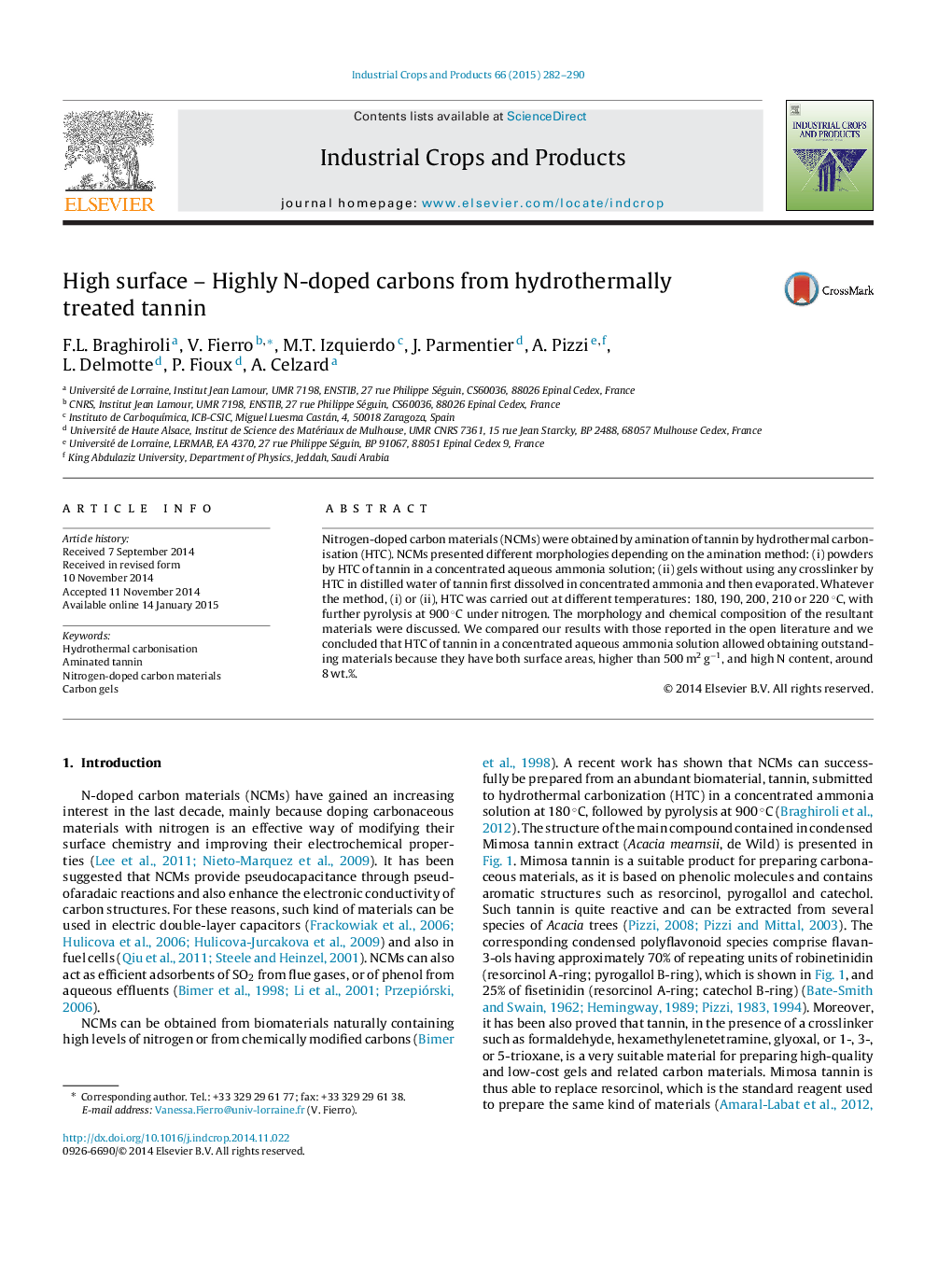| Article ID | Journal | Published Year | Pages | File Type |
|---|---|---|---|---|
| 4513205 | Industrial Crops and Products | 2015 | 9 Pages |
•N-doped carbon materials were obtained by tannin amination and hydrothermal carbonization (HTC).•High surface areas, 500 m2 g−1, and high N content, around 8 wt.% were achieved.•Tannin submitted to HTC in a concentrated ammonia solution resulted in a powder.•Tannin first aminated and then submitted to HTC in water resulted in a gel.•Gels were prepared without using any crosslinker.
Nitrogen-doped carbon materials (NCMs) were obtained by amination of tannin by hydrothermal carbonisation (HTC). NCMs presented different morphologies depending on the amination method: (i) powders by HTC of tannin in a concentrated aqueous ammonia solution; (ii) gels without using any crosslinker by HTC in distilled water of tannin first dissolved in concentrated ammonia and then evaporated. Whatever the method, (i) or (ii), HTC was carried out at different temperatures: 180, 190, 200, 210 or 220 °C, with further pyrolysis at 900 °C under nitrogen. The morphology and chemical composition of the resultant materials were discussed. We compared our results with those reported in the open literature and we concluded that HTC of tannin in a concentrated aqueous ammonia solution allowed obtaining outstanding materials because they have both surface areas, higher than 500 m2 g−1, and high N content, around 8 wt.%.
Graphical abstractFigure optionsDownload full-size imageDownload as PowerPoint slide
